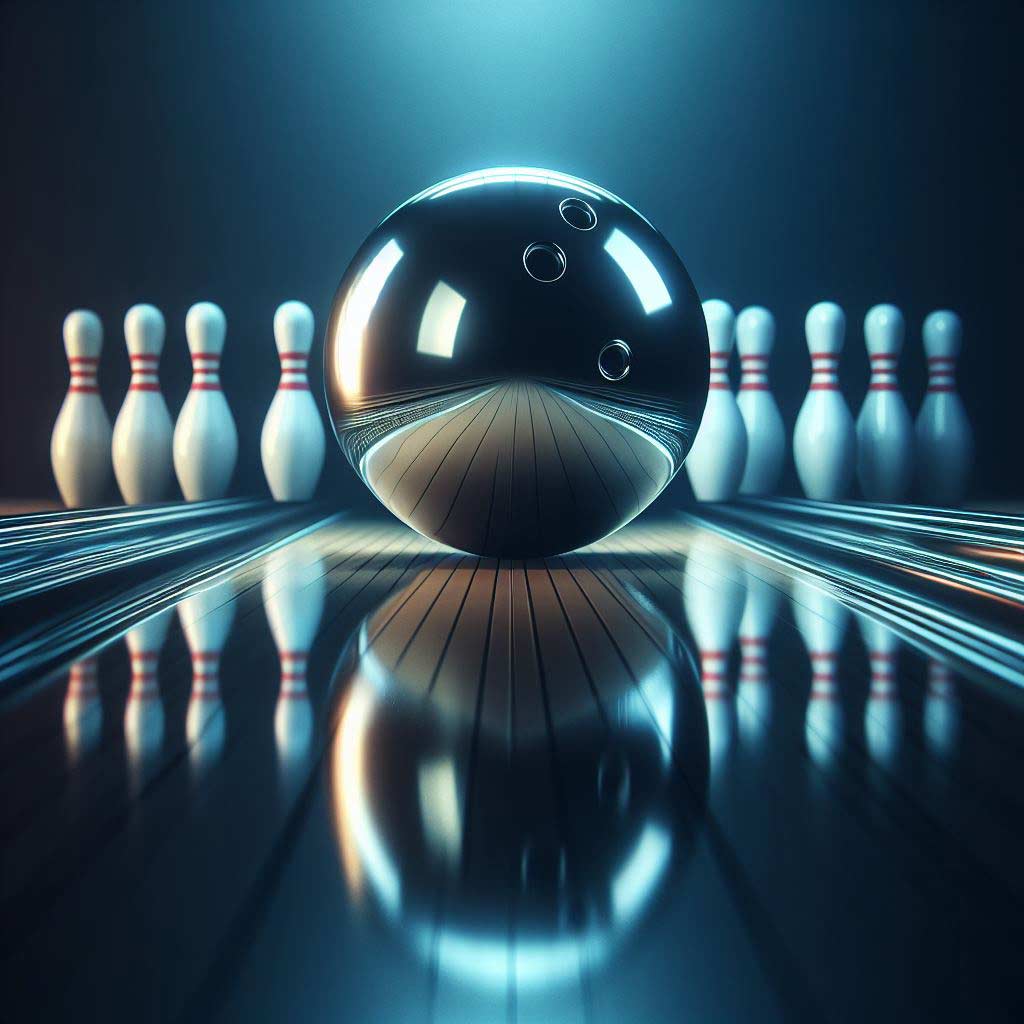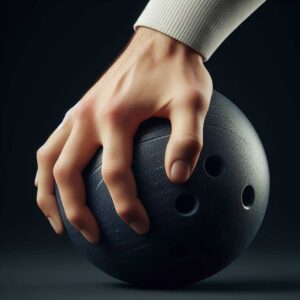As you walk into the bowling alley and take in that familiar smell of rented shoes and hot pizza, your eyes gazing down the long wooden lanes likely note one thing – the glossy, slick shine of the surface.
It almost looks wet, covered in some kind of shiny coating. Ever wonder what gives bowling lanes that ultra-smooth finish that allows bowling balls to glide so easily towards the pins?
Well, the secret lies in oil–lane conditioner oil, to be exact. Proprietary blends of oil are applied to bowling lanes to protect the wood surface and enable proper ball motion. This oil film allows hook potential, adds complexity to the sport, and greatly impacts your bowling success!
In this article, we’ll explore the key characteristics of lane oil, the bowling lane coating process, and why proper lane oiling is so crucial to the game of bowling. Let’s peel back the mysteries surrounding what’s on the lanes!
The Lane Coating is Oil-Based
Before we get into the details, let’s start with the basics. Bowling lanes are coated with a thin layer of oil-based substance referred to as lane conditioner. Lane conditioner serves multiple purposes:
- Protects Wood Lanes from Damage – Uncoated wood lanes would absorb bowling ball impacts, resulting in divots and indentation over time from the force of constant bowling ball impacts. The oil protects the wood finish from this direct pounding.
- Provides Smooth Ball Roll – The thin glossy oil film minimizes friction, enabling the ball to maintain momentum and roll smoothly towards the pins without grabbing or sticking.
- Enables Ball Hook Potential – As the ball is rolled, oil is picked up on the ball’s surface and carried down the lane. This allows the ball to maintain energy until friction kicks in further down the lane, enabling the ball to hook powerfully into the pocket.
Without lane oil, hooks would be very sharp and exaggerated. The oil blend enables just the right blend of slide, speed, and backend hook.
Lane Oil Characteristics
Now that we know bowling lanes are coated in oil, what type of oil is used? Well, lane conditioners have evolved over time from simple mineral oils to advanced synthetic blends tuned for bowling. Some key characteristics of lane conditioner oil include:
Oil Viscosity
The viscosity describes the thickness and flow rate of the oil. Thicker oils like molasses don’t flow quickly, while thinner liquids like water pour very fast. Modern lane oils use medium viscosity blends to enable smooth, controlled flow down the lane.
Oil Types
Common types include mineral oil, Teflon infusions, propylene glycol, and synthetic blends. Higher-end centers may use premium oils that are more durable, create better ball response, and are easier to clean.
Oil Patterns
The oil is applied to lanes in precise patterns using lane conditioning machines. Skilled bowling mechanics can program a wide range of oil patterns to create easy, medium, and challenging lane setups. The amount of oil in the middle vs. edges alters the ball reaction. We’ll cover patterns more later on.
Now that we understand the composition of lane conditioners, let’s look at how the oil is actually applied to bowling lanes.
The Lane Conditioning Application Process
Applying lane oil is an art and science perfected by professional lane conditioning technicians. The process works as follows:
- Conditioning Machines – Special wheeled machines, called lane conditioners or lane dressers, are used to apply oil. These devices have oil tanks, filters, applicator pads, and precision calibration to lay down the desired lubricant pattern.
- Pattern Settings – The technician programs the lane conditioning machine to apply a precise amount of oil in the desired board locations according to the selected pattern. More challenging patterns put more oil on the edges.
- Application Directionality – The machine is lowered onto the lane with the pads making contact across the entire width. It then travels from the foul line to the pins, carefully applying the special oil mixture in the calibrated amounts across the lane boards.
- Carry Down – As balls are rolled continuously, oil is picked up on the ball surface and carried further down the lane across the various board zones. This is called “carry down” and alters reaction over the course of games.
This carefully controlled lane conditioning process may seem involved, but is crucial for bowling function and scoring. Which brings us to the most important question – why is lane oil so important in bowling?
Why Lane Conditioner Oil is Key in Bowling
Lane oil seems simple on the surface but offers a complex range of ball reactions essential for the challenge and enjoyment of bowling. Professional and league bowlers are very tuned into lane conditions. Here’s why it matters so much:
- Allows Dynamic Hook Potential – The right oil pattern lets pro bowlers throw powerful hooks, while lesser-skilled league bowlers can still find adjustment and accuracy. The lane oil enables this wide range of play.
- Prevents Over/Under Reactions – Without oil, dry lanes would exaggerate hooks, while oily lanes would cause slippery overreactions. The right lane oil blend brings consistency.
- Keeps the Sport Challenging – Changing lane patterns, oil viscosities, and levels of oil carry down mean bowlers must continually make adjustments. This tuning of physical and mental skills makes bowling endlessly challenging and rewarding.
As you can see, the magic of bowling happens in the science and approach of lane conditioning. So next time you hit the alley, pause for a moment as you stare down the gleaming lane. Appreciate the subtle sheen coming from the thin oil film that makes the entire experience work!
In Closing
We’ve peeled back the curtain on what gives bowling lanes that signature glossy finish. A careful blend of protective lane conditioning oils enables smooth ball rolls, controlled reactions, and the satisfying thrill of bowling. Whether recreational or professional, the lane oil pattern and viscosity impact every bowler’s ability to play.
So now you’re in on the secret of what lies beneath the bowling lane underbelly! Understanding lane oil can improve your bowling skills and add appreciation for the science behind the scenes.
Next time you go to bowl, notice the small details of light reflecting on the lane oil sheen. Look for the carry-down tracking towards the pins. Experiment with small adjustments in angles, speed, and location to use lane oil to your advantage!
Frequently Asked Questions
Are bowling lanes waxed or oiled?
Bowling lanes are oiled. They use a thin oil-based lane conditioner fluid rather than wax to create the glossy finish and enable smooth ball rolls.
What finish is used on bowling alleys?
Bowling alleys use an oil-based lane conditioner finish applied by professional lane conditioning machines. This applies a precise pattern of protective lane oil.
What is bowling lane oil made of?
Lane oil can be made from mineral oil, Teflon-infused formulas, propylene glycol, and synthetic blends. Higher quality centers use premium lane conditioners.
What is bowling lane wax made of?
Bowling lanes are not waxed. The lane surface materials involve various oil-based conditioners rather than waxes. The fluid medium enables smooth ball roll.
What is Rule 31 in bowling?
Rule 31 prohibits altering the surface of bowling balls using abrasives during certified competition. This ensures fair ball motion.
Are synthetic bowling lanes oiled?
Yes, synthetic bowling lanes still require lane conditioning oil application. Materials like synthetic polymer overlay on wood still use protective lane oils.
What are 5 strikes in a row called?
In bowling, 5 consecutive strikes are called a “five-bagger” or “Montana Red” named after professional bowler Billy Welu’s red bowling shirt.
What do they use to make bowling alleys slippery?
Bowling alleys apply special medium-viscosity oil blends called lane conditioner. This oil mixture minimizes friction which allows the ball to slide smoothly before the backend hook.
What is the last frame in bowling called?
The 10th frame in a bowling game is called the final frame. If a bowler rolls strikes in the final frame, they get bonus balls to extend the scoring.





